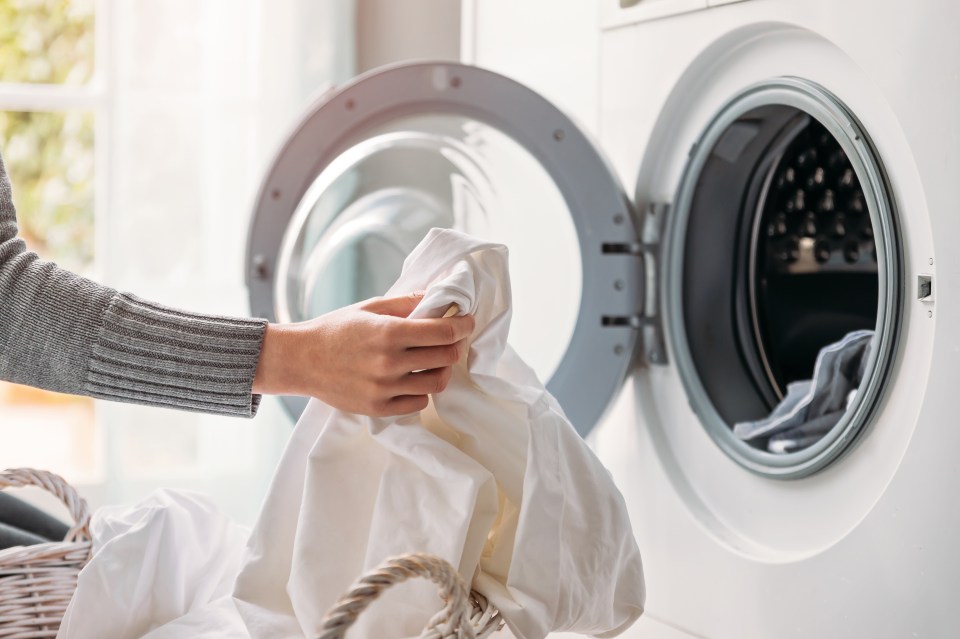MANY of us throw the bath mat into the washing machine along with towels without a second thought.
But a home expert has warned homeowners against it as you could face a hefty repair bill.
Scott Flint, also known as Scott the Fix-It Guy, a professional US-based appliance repair technician with over 30 years of experience and said it could do more harm than good.
“I’ve seen too many front-loaded washing machines ruined because customers used them to wash bathroom mats,” he wrote on Family Handyman.
Why? Well, it’s all to do with how much water they absorb.
Bath mats are designed to soak up excess water when we step out of the bath or shower to prevent the floors from getting damaged.
But that means the water they absorb in the washing machine can weigh more than the machine can handle.
He said: “Modern washers have a much faster spin rate than washers of the past, up to 1,200 revolutions per minute during high-speed spins.
“These faster rates create large amounts of force with heavy items, and the increased weight tears the washer apart.”
The appliance whizz added that people who ignore his advice and use a washing machine to clean bathroom mats risk two often costly malfunctions.
The first is that washing a bath mat at home might ruin the machine’s motor because the mat can disintegrate and clog the motor.
Scott estimated that a drain motor repair or replacement costs, on average, $240 (£183).
The second reason is that washing bath mats at home can cause a breakdown of the spin basket bearing, which allows the machine’s basket to rotate during the spin cycle.
Scott warned that the spin basket bearing often suffers the most damage because the soaked bath mats are likely heavy to manoeuvre.
He added that the bracket holding up the spin bracket, which is called the spider bracket, also breaks due to added weight.
The damage is pricey to fix, approximately costing $500 (£381) for the bearing and $500 (£381) for the spider bracket repair, meaning a potential total sum of $1000 (£763).
Instead, he suggested heading to the laundrette to get bath mats clean.
The machines in stores are often more robust, so they can handle the weight and won’t break down.
Easy ways to clean your big appliances
Nick Small, AO.com’s appliance expert said: “Spring cleaning is the ideal opportunity to give your home the once over and what better place to start than with the appliances that do all the heavy lifting?
“For the most part, all you’ll need is vinegar, bicarbonate of soda, water, soap, an old toothbrush, a microfibre cloth, appliance-friendly bowls and a lemon!”
Washing machine – The washing machine is the easiest appliance to begin with. Pop two glasses of vinegar into your detergent drawer and run this on a hot setting. The cycle will deep clean your machine without you having to lift a finger. Once completed, run a hot water cycle to remove any residual vinegar from your washing machine.
Tumble dryer – Use a vinegar/ water mix to wipe clean any stains on the drum and use a microfibre cloth to wipe down any areas like the door seal, or raised ridges where lint can collect. Finally, give your vacuum a whirl to hoover up any lint from your dryer’s filter.
Dishwasher – Empty your dishwasher and wipe down the spray arms and racks with soapy water. Place a bowl with the vinegar/ bicarbonate mix on the top shelf and run a hot cycle to leave your appliance fresher than ever.
Microwave – Place a bowl of water with a chopped-up lemon into your microwave for five minutes. Once this is done and the bowl of water can safely be removed, wipe down the interior for a quick and easy clean.
Oven – Mix bicarbonate of soda evenly with water and spread the paste on the inside. Let this sit overnight, then take a damp cloth to it the following morning. For stubborn grime you can once again turn to vinegar to help clean your oven.
Fridge – Begin by emptying all shelves and get rid of any food that has expired. Clean the shelves using soapy water and wipe down your fridge’s interior with disinfectant wipes, or by mixing vinegar and bicarbonate of soda together. Dry everything thoroughly before popping any food back in.
Vacuum cleaner – Take apart your vacuum and wipe down every nook and cranny with a damp cloth. Pay special attention to the overlooked bristles and pull any hair, debris or dust free before reassembling your vacuum.
Toaster – Turn your toaster upside down and shake free the loose crumbs or remove the crumb tray if this is an option. Then, use an old toothbrush to loosen crumbs from those hard-to-reach spots and wipe down your toaster’s exterior with a damp cloth.
Kettle – Fill your kettle halfway with an equal solution of water and vinegar. Bring this to boil and leave to sit overnight to break down limescale. In the morning, rinse your kettle thoroughly to remove any lingering vinegar.








